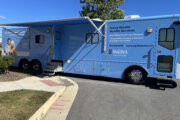Get ready for another rally for the U.S. dollar. It’s what economists call “policy divergence,” and it means investors will pour their money into greenbacks.
Here’s how it will work and how investors could profit.
The Federal Reserve, which is the central bank for the U.S., is expected to have policies that will increasingly diverge from those of the world’s other major central banks, such as the European Central Bank and the Bank of Japan.
In the simplest terms, the Fed will continue to increase the cost of borrowing money, while most of the rest of the world will either lower their short-term lending rates or leave them unchanged.
That means that the difference between what investors can earn on their money by holding them in dollars versus what they can get in other major currencies, such as the euro and the Japanese yen, will get larger.
For instance, the ECB has a negative interest rate of minus 0.3 percent, but the Federal Reserve just increased its target cost of borrowing to between a quarter and a half of a percentage point.
The discrepancy between the two will likely get larger, providing an increasing incentive for investors to ditch euros in favor of dollars. Similar stories are happening with other major currencies.
The dollar’s rise began in 2015. There has already been something of a surge in the greenback throughout 2015, with the dollar increasing around 11 percent against its trade weighted index of major currencies, according to data from the Federal Reserve Bank of St. Louis.
Usually, any change in the policies of central banks is widely anticipated by investors and speculators. Moves in the value of currencies would typically precede what the Fed or the ECB was planning to do.
But these aren’t ordinary times. The zero-interest rate policy that the Federal Reserve pursued in the wake of the financial crisis was itself highly unusual.
“This is an unprecedented policy tightening and unlike in the past, we expect the dollar rally to continue,” says Ellen Zentner, chief U.S. economist at Morgan Stanley. “We see continuing tightening by the Fed while our major competitors loosen.”
One of the key features of the way Fed operates is that it is very measured in its policy moves, she says. A recent report from Morgan Stanley highlighted the Fed’s use of the word “gradual,” regarding the pace of increases in interest rates. She sees the next increase in the cost of borrowing at the Fed’s June meeting.
Another factor that may give the greenback some extra help is that Congress has just passed a rather large spending bill. “It’s clear that there is a lot of fiscal stimulus coming and that is against the backdrop of tighter money,” says Jurrien Timmer, director of global macro at Fidelity Investments in Boston. “For the last few years, we have fiscal constraint and easing in monetary policy.”
As a result, the U.S. would have a situation that somewhat mimics what happened in the early 1980s when the dollar surged, according to a recent report from Brown Brothers Harriman.
Not everyone is so optimistic for a major rally.
“What you see is a tremendous expectation that [ECB chief Mario] Draghi will continue to prime the pump,” says Brad McMillan, chief investment officer at independent broker-dealer Commonwealth Financial Network. The money printing program and other stimulus efforts by the ECB likely won’t be as high as some investors expect.
“I think the divergence goes down,” he says.
McMillan says he is also skeptical about any anticipation of changes in government spending. “I think making a bet based on politics is something I’d be very cautious about.”
How does an investor profit? If you buy the bullish arguments, investors could buy the PowerShares DB U.S. DollarBullish exchange-traded fund (ticker: UUP) which tracks the performance of the dollar against the major currencies — pound sterling, Japanese yen, Canadian dollar, euro, Swiss franc and the Swedish Krona.
One thing you shouldn’t do is “day trade” foreign exchange for yourself. The so-called FX market is huge and full of extremely sophisticated traders, such as large commercial banks. Online brokerages offering to let investors trade on credit should be avoided.
In addition, the rally in the dollar won’t be kind to prices of precious metals, which are often viewed as a safe haven asset in times of financial instability. They are also priced in dollars, which means that a rally in the greenback will make gold and precious metals cheaper.
More from U.S. News
10 Tips for Handling Investments and Divorce
8 Stocks Headed for a Fall in 2016
8 Stocks to Buy for a Great 2016
Why the Dollar Will Surge Again originally appeared on usnews.com







